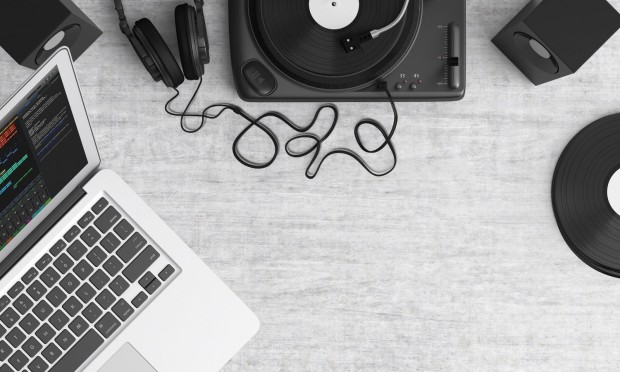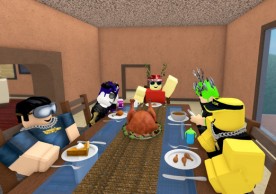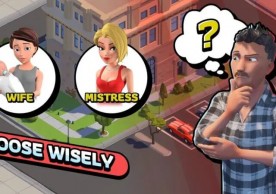
If you have an active interest in using music to help, make your film or video project complete then you need to know as much as possible about the many hoops you'll have to jump through if you wish to use existing musical output.
The term copyright-free music is something of a misnomer, indeed this term is usually used instead of the accurate term, royalty-free music. We'll come back to what royalty-free means in this context but first let us consider what copyrighted material actually means.
Ownership and Licenses
The term copyright effectively reflects that nature of ownership and relates to who holds the rights to a product, in this case a piece of music, a single song or a sample.
Music produced by well-known artists clearly makes sure that their output is covered by a copyright that means that any use of their product must be cleared by the relevant rights holder. Getting that clearance is not only incredibly expensive, it's also not simply a case of throwing money in the right direction.
So, simply put, if you wish to use a great song that is commonly played and might even be a massive mainstream hit, you'll need to get the relevant license to be able to do so.
This is Where it Gets Tricky
Some songs and samples will be owned by multiple parties, and even held by more than one rights holder, which clearly represents a logistical nightmare. Paying for the use of such content is very pricey, especially if it's for commercial usage.
Let's say, for argument's sake that you have the funds to pay that fee, unless you are a well-known film producer or perhaps represent a big product that is looking to use the song to back an advertising campaign, it's likely you won't get the permission to do so.
Some artists are very picky indeed when it comes to offering permission to their work, so the act of getting clearance is costly both in terms of money and time and these are both very valuable resources.
How Does Musical Copyright Work in Practice?
Usually, though not exclusively, the copyright associated with a piece of music will come in two parts. The first relates to composition in its essence and the second relates to the particular recording of the piece. In simple terms this means that for the first part of the license you could, in theory, record your own version of a track but if you wanted to use the original recording itself there'd be a greater cost to pay, and a relevant license.
As an example, you might be friends with great musicians who can record a version of The Weeknd's hit Blinded by the Lights, and you can record an interesting cover and get the clearance for it. Or you can look to use the 'actual' original.
There are also differences between incidental use of music, say it's playing in the background in a bar scene, or it's used as an overlay on the soundtrack. Again, there are many very complicated aspects you'd need to be aware of if you chose this route to musical license clearing.
So What's the Alternative?
Well the alternative, in this instance, is actually in many ways better than the original idea you may have had. Royalty-free music, which we've already ascertained is pretty much what is meant by copyright-free music, is a much better way to score your soundtrack.
Royalty-free music is music that's available for a one-off fee that gives you carte blanche when it comes to the use of the track. You typically access this tranche of music via royalty-free music providers, such as Artlist, and the benefits of doing so far outweigh looking to use other ways to score your film or video production.
Where Does Royalty-Free Music Come From?
Usually a royalty-free music provider offers music, and sound effects, produced by a number of artists, DJs, singers, musicians and bands. The provider offers you access to a treasure trove of content, thousands of tracks and samples, which you can then search through in order to find the perfect fit for your needs.
If you were to come up with an analogy as to the comparison between using existing mainstream music vs royalty-free music, perhaps this is a good way to look upon the conundrum.
Say for instance you are heading to a store and you have one particular, expensive, product in mind. You then enter the store and as well as seeing the overly priced option, you also see a number of other products (that you may have not considered previously) that work better and more effectively for your purposes and for a better price.
In this scenario you would clearly more likely opt for something other than the initial item you believed you'd needed.
Royalty-Free Music, a Booming Industry
As we have all become mini-content producers of our own, while others are taking advantage of the relative ease and cost-effective nature of filmmaking, this has produced something of a content revolution.
This has led to a marked increase in those who elect to use royalty-free music and as a result the number of brands offering this service has increased exponentially.
The great thing about this is that the quality of the services offered, and the price, have improved for the user. In other words, the time is right to take a look at what's on offer and remember that the importance of a great musical accompaniment for your compelling visuals should never be overstated. It's the glue that will keep your entire project, big or small, together and will lead to the creation of a professional product.
* This is a contributed article and this content does not necessarily represent the views of mobilenapps.com
more stories from How To
-
iPhone Hack: How to Check Microphone-Enabled Apps And How to Turn Off Their Access for Privacy
Explore the nuanced landscape of iPhone microphone privacy, from recent breaches to proactive user strategies.
ernest hamilton -
How to Safely Reset Your Android Phone Before Selling or Passing It On
Learn how to safely factory reset your Android phone with this comprehensive guide. Protect your privacy before selling or passing on your device. Follow this step-by-step instructions for a seamless transition.
ernest hamilton -
How to Fix iPhone Boot Loop: Unlock Your iPhone's Potential with This Step-by-Step Guide
Learn how to conquer the iPhone boot loop with this comprehensive step-by-step guide. Follow the expert instructions to restore your device's functionality and bid farewell to endless reboots
ernest hamilton -
12 Ideas to Crafting a Memorable Mother’s Day Post on Your Business’ Social Media
Discover innovative post ideas and expert tips to engage your audience and drive sales. Read now and make this Mother's Day unforgettable!
ernest hamilton -
‘Coin Master’ Guide: How to Find Chests to Get More Card Collections, XP and Coins
Learn the secrets to unlocking Coin Master chests and supercharge your gameplay! This comprehensive guide reveals expert strategies for acquiring coveted chests, maximizing rewards, and dominating the game.
ernest hamilton -
Roblox: WS10'S MM2 Codes (May 2024)
Unlock rewards with WS10'S MM2 codes for May 2024 in Roblox! Get ahead in the game with exclusive bonuses.
ernest hamilton -
Idle Office Tycoon May 2024 Codes: Get Free Diamonds & More!
Unlock free diamonds and more in Idle Office Tycoon with the May 2024 codes! Redeem them now for exclusive rewards.
ernest hamilton -
Finding GBA ROMs for Your Delta Emulator: A Handy Guide
Looking for GBA ROMs for your Delta Emulator? Check out this handy guide to find and download your favorite games hassle-free!
ernest hamilton










